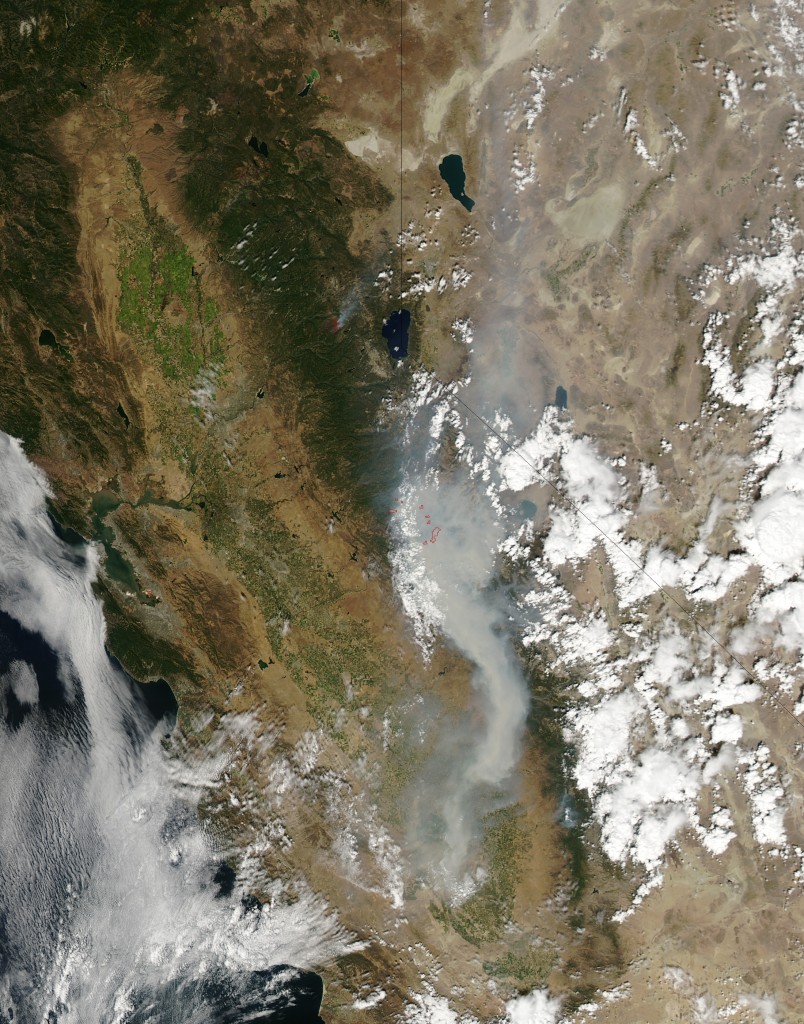Probably the most obvious manifestation of air pollution comes when looking out of the window and scanning the horizon – does the landscape go on for miles or is the view reduced? The build-up of air pollution can often dramatically reduce visibility via a shroud of haze.
On a recent trip to the Turkish Mediterranean coast near Antalya, the impact of air pollution on visibility was abundantly apparent. Below are two photographs I took of the view.

View of the Beydağları Mountains in Antalya Province, Turkey. The top image is from the morning of 11th November 2013, while the bottom image is at sunset on the 12th November 2013. Photographs by Will Morgan (me).
The photographs look out to the west from the hotel I was staying in. In the top picture, there is little to see aside from a few tall buildings just observable beyond the trees in the foreground. In the bottom image though, the Beydağları Mountains can be seen, although the view is still hazy. The mountains were approximately 20 miles (32 km) away, so to not be able to see the mountains at all in the top picture requires a large amount of haze. During the ten day trip, views like the top image were far more common.
Antalya province is surrounded by the Taurus Mountains, with the Mediterranean sea to the south, so it forms a bowl-like basin where air pollution can build. It is also very sunny, which gives atmospheric chemistry an extra kick to form air pollution. This cocktail is similar to other pollution hotspots such as Mexico City and Los Angeles.
The other key feature is that temperature inversions are common in Antalya. Typically, the temperature cools in the lowest part of the atmosphere with height but these inversions see a reversal of this trend within the first few hundred metres, which prevents air rising and mixing efficiently. You end up with a basin with a lid on it, so when pollutants are emitted into this, they find it difficult to disperse. This is like mixing a squash or cordial with water and only filling the glass half way with water – the amount of cordial (pollutant emissions) remains fixed but the reduced water level (temperature inversion) sees the concentration rise. Below is a video of a demonstration of temperature inversions, which actually refers to air pollution in Denver.
The apparent major source of air pollution in Antalya is the burning of low-quality coal and domestic wood burning, which is particularly prevalent during the winter. I also noticed small fires from agricultural and trash burning during my stay. Summer temperatures typically exceed 30°C, so air conditioning is common rather than central heating systems. Evening and overnight temperatures during the winter drop below 10°C, so some form of heating is required.
The impact of air pollution on visibility is clear in the region and the health implications are also known, with Doctors warning about the risk from air pollution. Just this week, there were news reports warning that Antalya would experience poor air quality this winter.
Tackling the challenge is not easy though, especially given that the geographical and meteorological conditions in the region can’t be controlled. Antalya illustrates the interplay between these natural factors and our own role in pollutant emissions, which presents particular difficulties when trying to improve air quality. This interplay is prevalent across the globe.





